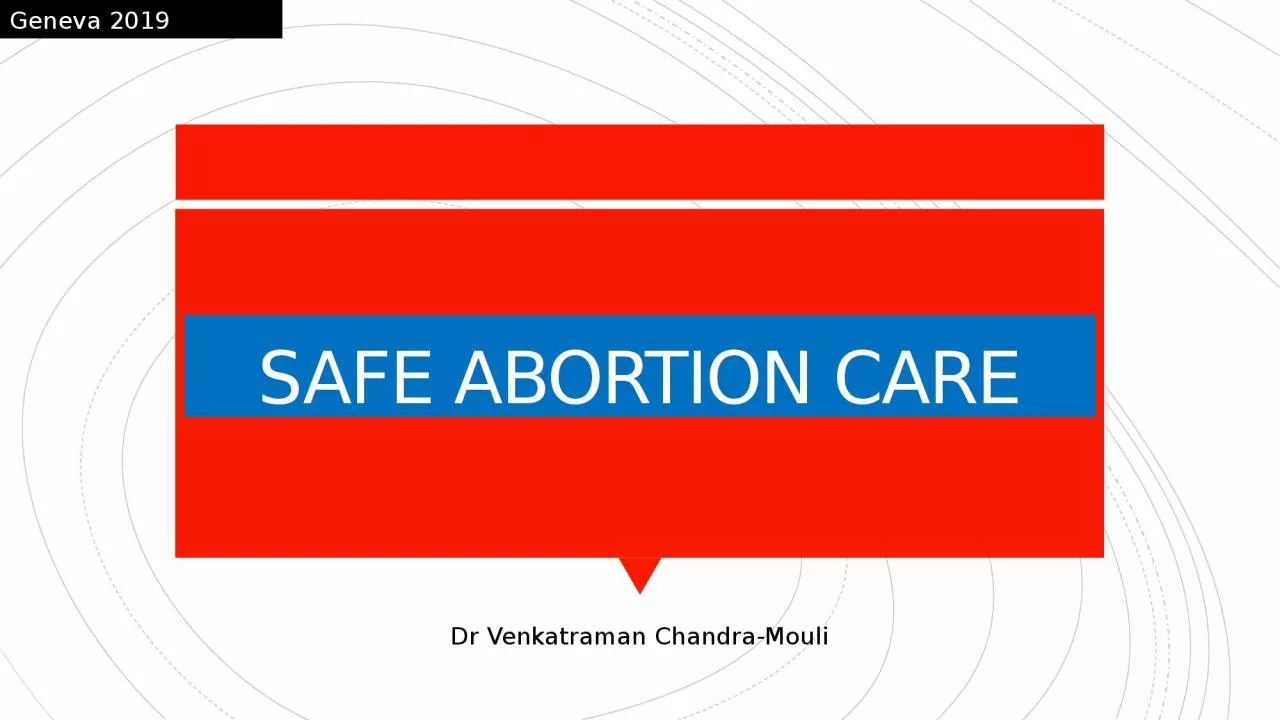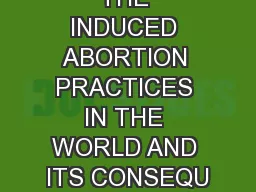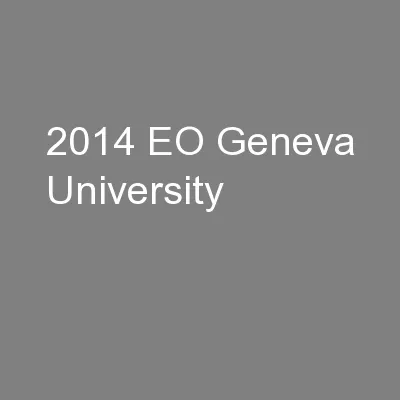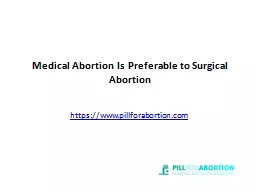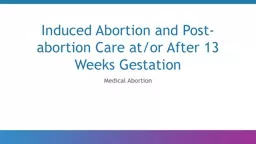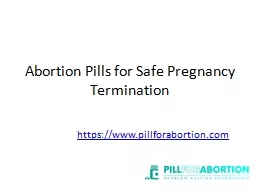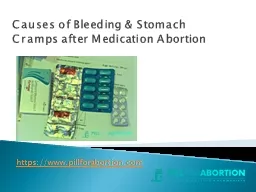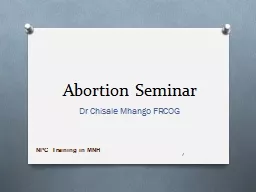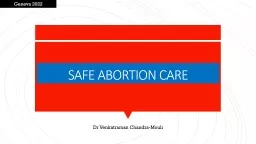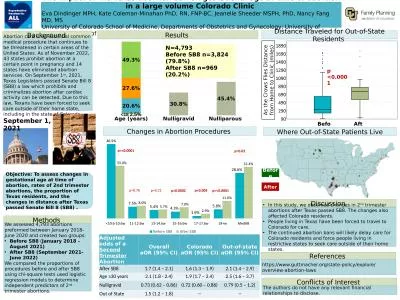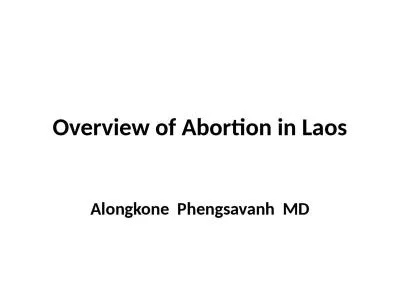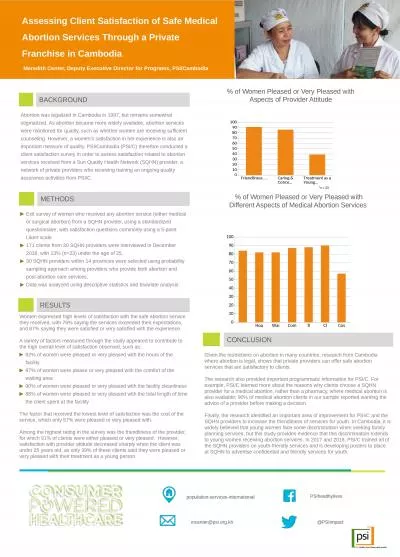PPT-SAFE ABORTION CARE Geneva 2019
Author : willow | Published Date : 2022-06-15
Dr Venkatraman ChandraMouli DEFINITIONS Induced abortion Intentional loss of an intrauterine pregnancy due to medical or surgical means Safe abortion Abortion
Presentation Embed Code
Download Presentation
Download Presentation The PPT/PDF document "SAFE ABORTION CARE Geneva 2019" is the property of its rightful owner. Permission is granted to download and print the materials on this website for personal, non-commercial use only, and to display it on your personal computer provided you do not modify the materials and that you retain all copyright notices contained in the materials. By downloading content from our website, you accept the terms of this agreement.
SAFE ABORTION CARE Geneva 2019: Transcript
Download Rules Of Document
"SAFE ABORTION CARE Geneva 2019"The content belongs to its owner. You may download and print it for personal use, without modification, and keep all copyright notices. By downloading, you agree to these terms.
Related Documents

